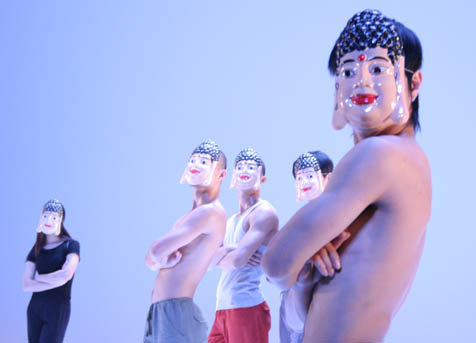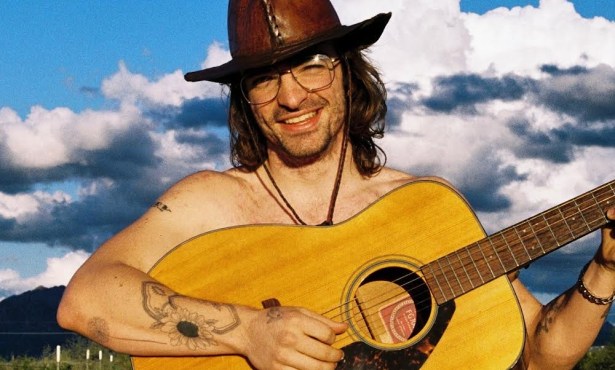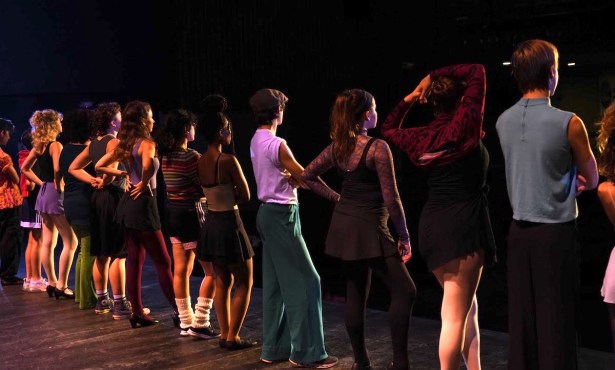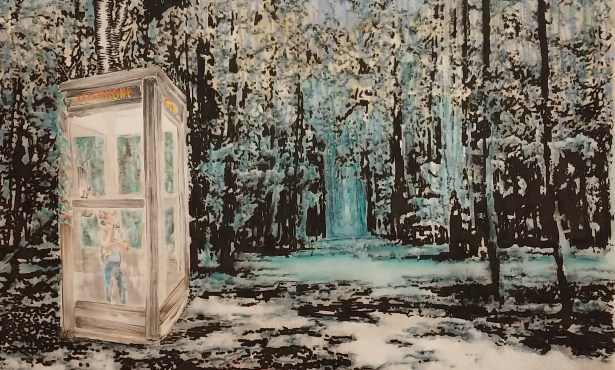Vietnamese Choreographer Ea Sola on Contemporary Dance
Something Like Art

For a woman who wants to cast off conviction for the sake of discovery, Ea Sola has some strong opinions. The Vietnamese-born, Paris-trained contemporary dance choreographer fled her homeland at the height of the Vietnam War. Fifteen years later she returned and spent five years conducting research on the traditional dance and music of Vietnam, eventually creating a contemporary dance about the memory of the war. When Drought and Rain debuted in 1995, it was performed by a cast of elderly Vietnamese peasant women. This Wednesday, January 30, Sola brings her newest work, Drought and Rain Volume 2, to UCSB’s Campbell Hall. Volume 2 features 12 dancers from the National Ballet of Vietnam, Hanoi. Last week, Sola spoke to me on the phone from Hanover, New Hampshire, about working with a younger generation of Vietnamese dancers and what it means to make contemporary dance.
I’m interested in how you transformed a dance for older, Vietnamese peasant women onto young professional dancers’ bodies. Volume 2 is really a different piece-what’s similar is the subject: the memory of war. This time it is not about the Vietnamese war, but about the war today. I wanted to know from young people what they feel when they see all these images of war, and I wanted to work with dancers from Vietnam, because they come from a people who have fought so much for peace.
Can you tell me a little bit about the process of creating the work? Each day is really different, because I really push the dancers to go farther, farther, farther, so the work is not very comfortable-for the dancers or for me. It is not only thinking about war; it is also about the work with the body, about themselves. There are times when the dancers kind of panic. Sometimes they are afraid, sometimes they feel more secure. And they discover themselves through the work, through the subject. I don’t want the dancer to interpret a character; I want the dancer to be himself as a consciousness. And I really ask the dancers to bring that consciousness from the beginning to the end of the day’s work. I ask them not to forget to feel, and to go where they don’t know anything.
It must be very different from working with the older women in Drought and Rain. With the young dancers, it’s different in that they are professional dancers, so they are used to knowing the stage, but even that I want to deconstruct with them, because it’s very difficult to work when you know things. When you know, you cannot do anything, in fact, because you know already. There is no risk in that. I prefer to go where I don’t know anything. Of course there is risk. But it’s more exciting, and there is an adventure in that. I’m proposing a human adventure, one where we question society, question our own lives, and question history.
Would you say the dancers are also creators of the work-do you consider your choreography collaborative? I think sometimes maybe people think choreographers work with dancers so we have to make movement, and then we say to the dancers, “Please make this movement for me.” Personally, I think it’s terrible if the choreographer makes the movement and asks the dancer to imitate this movement. It’s not contemporary at all, and it’s crazy, because it is manipulative. And it does not consider the person. Of course, you have to collaborate to work with the body of the dancer. But because the dancer improvises in order to work with you, does that mean he creates? Where does he begin to create and where does the choreographer begin to create? This is very unclear in the minds of people. And it is interesting. Every person who is onstage contributes a part of the work. And this is their work-to bring the movement to the point where you can feel something like art. This is the work of the dancer; this is the work of the singer, and anyone who is on stage-to bring it to that point; to interpret.
I work with a subject, usually a very clear subject, and a certain way of moving. So yes, I ask people to improvise, but I give things for them to improvise with. It is a special world of movement; it is a kind of universe that they can either feel or not. If they don’t feel it, we cannot work together. But I ask the person first to be the person, to be himself-to be simple.
4•1•1
Ea Sola presents Drought and Rain Volume 2 at UCSB’s Campbell Hall on Wednesday, January 30, at 8 p.m. For tickets, call 893-3535 or visit artsandlectures.ucsb.edu. As part of its residency, the company will also offer an intermediate/advanced level master class from 7:30-9:30 p.m. on Monday, January 28, at the Santa Barbara Ballet Center. To reserve a space, call 966-6950 or visit sbdancealliance.org.



